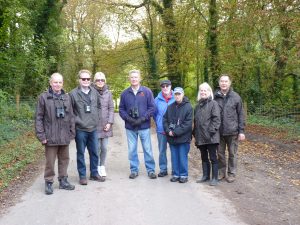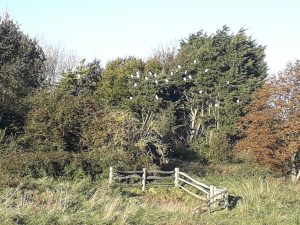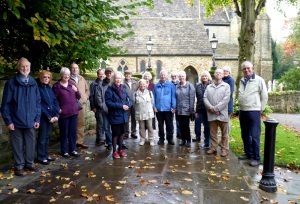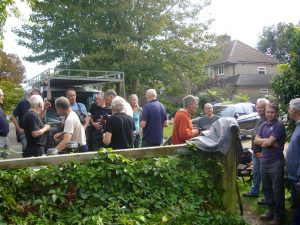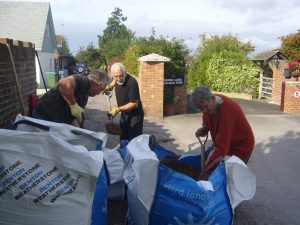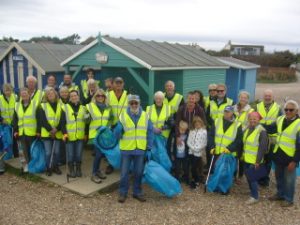Glyn Jones gave a talk to Ferring Conservation Group [on 26 January] on the work of the South Downs Society, trying to protect the Downs from development while opening them up for recreation and quiet enjoyment of the landscape and other heritage assets. The Group was founded in 1923, as the Society of Sussex Downsmen, and its major achievement was its successful lobbying for the creation of the National Park, long promised but only implemented in 2002. Since then, he said, the Society had tried to be a ‘critical friend’ of the South Downs National Park Authority, offering advice and public engagement, and campaigning for the defence of the Downs in a way that the SDNP could not do, as a government body.
Glyn, a retired National Trust Ranger, clearly knew the Downs from Winchester to Eastbourne like the back of his hand, and illustrated his talk with many images – familiar and unfamiliar – of the chalk hills, beautiful villages, ancient hill-forts, modern farming, wildlife and people enjoying the landscape in many different ways. He pointed out that the National Park included valuable heathland, such as around Midhurst, where the plants and animals were quite different from those of the Downs themselves. Lizards and even adders could still be seen there, although the adder population was declining.
He ended his talk with a survey of the continuing threats to the Downs, even with their National Park status – fracking wells had been banned in the Park but not necessarily horizontal drilling from outside; major road schemes, like the A27 at Arundel; and on-shore wind farms. By contrast, the developers of the Rampion off-shore wind farm had worked very closely with all concerned to minimise the intrusion of the turbines and restore the landscape temporarily marred by the on-shore cabling.
After a break for tea Graham Tuppen delivered the popular Nature Notes slot and began by informing us that some welcome signs of spring with Snowdrops, Crocuses and Daffodils were all evident in sheltered places and also Hazel catkins had appeared on trees in Sea Lane. Thrushes and Robins had begun singing and Tricia Hall had reported spotting a Water rail in her garden, with a further six seen on the Rife along with a solitary Brent Goose. It had been reported that Foxes had been enjoying the winter sunshine by laying on garden shed roofs and Wood mice had been viewed feasting at bird feeders.
Ed Miller concluded the January meeting with news that ASDA had submitted a planning application for a Petrol Station and Jet Wash on the North East corner of their Ferring store. Ed advised us that the decision on the four detached houses proposed at 32/34 Sea Lane had been delayed, while the proposed additional apartment at Southpoint on the old Beehive Cottage site had still to be decided. The 23 Yurts proposed at the foot of Highdown are still awaiting a decision on appeal, and the four bungalows proposed at 44, Ferringham Lane were awaiting a decision by Arun DC in March of this year.

